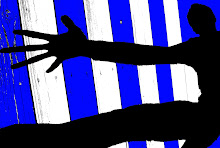What is the role of location due to folding?
To fold into suggests entry, convergence, to fold into does not mean force...rather ease into.
To fold to the interior may mean to preserve vs exterior. Unfolding the paper shows that it now actually has an interior and exterior. There is evidence for this in the presence of creases. Some creases point inward while others preserve the location that is no longer exposed when folded. There is only so much that can be removed to try to mask this evidence, but after folding impact has been made.
Subscribe to:
Post Comments (Atom)

1 comment:
This evidence has much aesthetic potential in addition to physical considerations, evidence that connection has happened, that encounter has meaning, that association can change, that is it not easy to resist influence, that encounter does not mandate permanent locking, but modifications, bits of evidence itself are carried into other encounters where shaping continues, where perhaps, through many encounters, what can be linked to enlarges --more complex networks can form.
I like your observation that folding tends not to imply force; much more cooperation is suggested. In sewing, the sleeve is usually larger than the armhole, and the terminology for getting the sleeve into the smaller armhole is easing the sleeve into the space, gently rippling the edges so that once stitched in place, there is apparent smoothness, apparent perfect fit --interesting accommodation
(and something discussed in Deirdre in Kinnell's Saint Francis and the Sow in Tokyo Butter; the same poem also references SEMM images in France Bourely's Hidden Beauty: Microworlds Revealed that have not been colorized, unlike many images in Super Vision and in the Nikon Small world competition winners.
Post a Comment